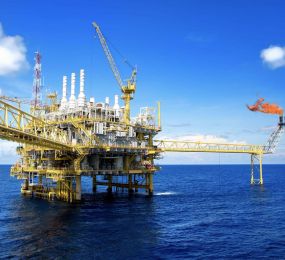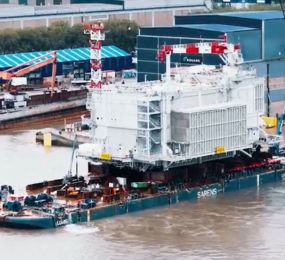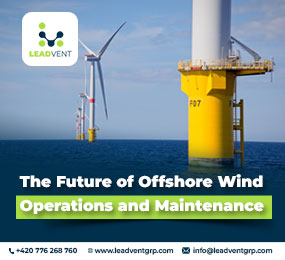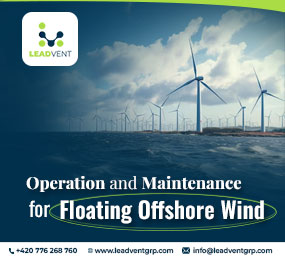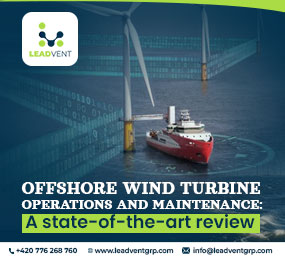Digital Inspection Technologies for Offshore Wind O&M
With the requirement of renewable energy growing at a very fast pace, the offshore wind industry is flourishing within it. Maintenance of these offshore wind farms, especially those of floating offshore wind structures, poses a lot of challenges. Digital technologies for inspection are revolutionizing the maintenance of offshore wind turbines by making maintenance more efficient, cost-effective and safe. The integration of advanced tools such as drones, robotics, and AI-driven analytics, apart from improving the maintainability of turbines, also extends their lifespan.
It will be at the 4th Annual Offshore Wind Operations and Maintenance Forum, as these offshore wind turbine maintenance technologies will be put forward, and experts from the industry will create the showcase around these innovative solutions and best practices in offshore wind maintenance.
The Need for Digital Inspection Technologies
Difficulties in Maintaining Offshore Wind Facilities
Offshore wind farms have an adverse marine environment, limited access, and relatively high costs within the industry, such as in operations. Due to the traditional inspection technique of manual labour supplemented by long downtimes, maintenance costs increase.
Advantages of Digital Inspection Technologies
- Safer: Since there is little or no physical inspection work done by people in hazardous environments, it is safer for them to do their inspection by remote means such as drones and robots.
- Savings on Expenses: Minimised vessel trips and downtime add to reduced costs of automated inspections.
- Higher Efficiency: Collecting data in real-time and having it analysed by AI-driven methods predicts maintenance failures and eliminates surprise downtime.
Different Types of Digital Inspection Technologies
Drones and UAVs
Drones fitted with high-res cameras and thermal imaging sensors inspect turbine blades, nacelles, and other components where they capture high-detail images and detect cracks, erosion, and other problems that cannot be viewed by the naked eye.
Case study WindFarmX Drone Program: WindFarmX drones are employed to inspect their floating offshore wind turbines. This led to a 50% reduction in inspection time and a 30% cut in maintenance costs through early identification of blade damage, avoiding expensive repair costs and extending the life of its turbines.
Robotics and Autonomous Vehicles
Remotely operated vehicles, inspect sub-sea cables, foundations, and floating platforms. These robots can operate in very rocky deep waters and poor conditions and take real-time video and structural data.
AI and Machine Learning
AI-based analytics platforms will process inspection data to check patterns and predict future failure events. Failure prediction analysis is done using real-time sensor readings along with historical data for forecasting the deterioration in equipment, thus allowing operators to plan maintenance in dynamic balance.
Statistics:
- Up to 25% savings on maintenance costs can be achieved through digital inspection technology.
- Predictive maintenance through AI increases turbine availability by 10% to 15%.
- Drones carry out inspections 70% quicker than traditional manual inspections.
Digital Inspection and Floating Offshore Wind Farms
Emerging in somewhat deeper waters, floating offshore wind farms are situated beyond the reach of the fixed-bottom turbines. Because of the dynamic motion accompanied by operating those offshore structures and harsh marine environments, there are yet more challenges in maintaining those floating structures.
Floating platform integrity monitoring, as well as subsea mooring, became possible through digital inspection technologies employing drones and ROVs for real-time data collection on conditions such as platform stability, tension at the anchors, and condition of the cables to ensure safe and efficient floating wind farm operation.
4th Annual Offshore Wind Operations and Maintenance Forum
The 4th Annual Offshore Wind Operations and Maintenance Forum is a major event gathering top talents in the industry for their advancements in offshore wind maintenance while showcasing innovations by technology providers and policymakers alike.
Event Highlights:
- Expert Panels: A series of sessions around digital inspection technologies, predictive maintenance, and asset management for offshore wind farms.
- Case studies from floating offshore wind projects, showcasing the successful digital inspection programs implemented in real life.
- Networking with the relevant stakeholders and forging partnerships to innovate offshore wind maintenance and efficient end-to-end operations.
- Technology showcase with live demonstrations of drones, robotics, and AI platforms developed for offshore wind turbine maintenance.
This program will guide on changing the scope of how digital tools affect maintenance in the offshore wind industry, increase productivity, and lower operation costs.
FAQs
Q1: How do drones help with offshore wind turbine maintenance?
Drones speed up inspections while making them safer to provide a clearer and high-resolution image making it much easier to identify damage to blades, corrosion and much more.
Q2: What role does AI have to play in offshore wind maintenance?
AI fully employs the data it acquires from sensor readings and inspections to help predict equipment failure, conduct preventive maintenance, and reduce downtime.
Q3: Why Digital Inspections?
Floating wind farms are deeper in the water, making manual inspections difficult. Digital tools such as ROVs monitor structural integrity, which makes operations safe and effective.
Conclusion
Digital assessment technologies make a massive difference in the maintenance of offshore wind turbines, improving safety and reducing costs while enhancing the efficiency of maintenance procedures. Digitalisation using drones, robotics, and AI examination plays a critical part in upholding offshore wind farms of both fixed-bottom and floating types.
The 4th Annual Offshore Wind Operations and Maintenance Forum allow leaders within the industry to explore innovations in the field, share best practices, and work toward unexplored solutions. The offshore wind turbine maintenance, therefore, improves its operational abilities, assists international renewable energy goals, and ensures the longevity of offshore wind farms by adopting digital inspection tools.



